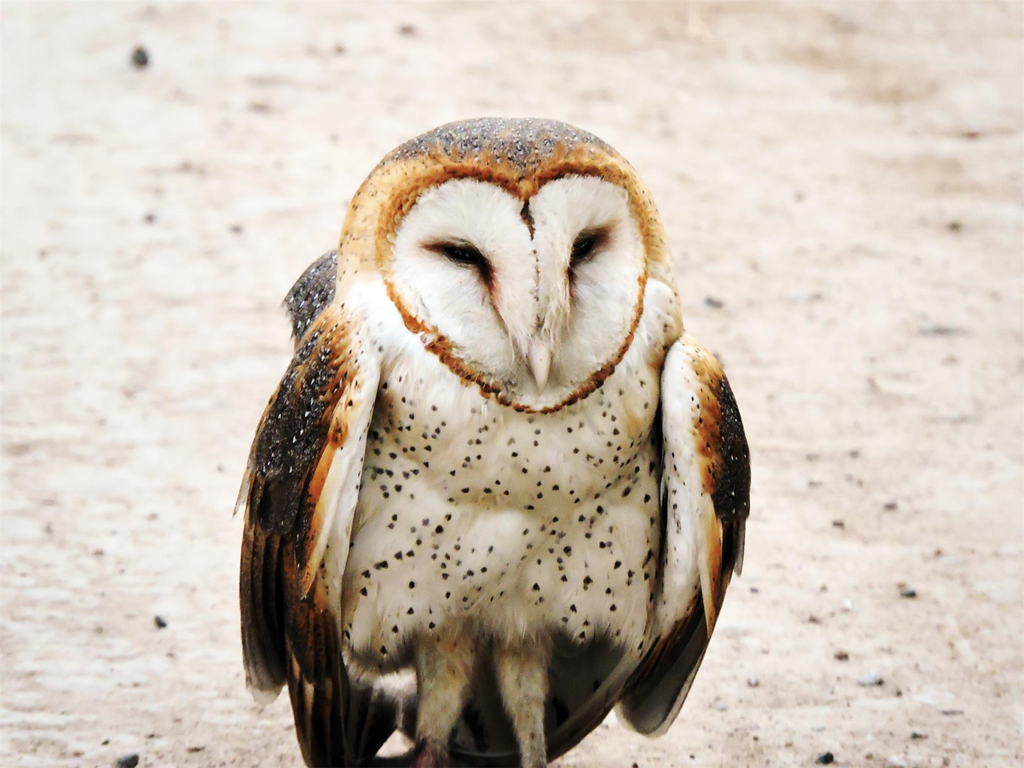Barn Owl

A.K.A. the monkey-faced owl or the ghost owl
- The Barn Owl is the most widely distributed owl in the world. It is found on every continent, except Antarctica
- Barn Owls are cavity nesters. Common nest sites are large trees, old barns, silos or other man-made structures
- They have a long, drawn out breeding season and will lay eggs from April-October
- Barn Owls have exceptional hearing and low-light vision. This allows them to hunt prey strictly by sound
- A Barn Owl family can consume approximately 3,000 mice in one year
- Changing agricultural practices and development have threatened some Barn Owl populations, but nest boxes have helped increase numbers in other areas
Identification Features
- Medium-sized, slender owl
- Long, thin legs and short tail
- Distinctive white "heart-shaped" face
- Mostly white on the belly, the back is cinnamon-red and grey with small dark spots
- Males and females are similar, but females have a slightly darker back and belly
What size is a Barn Owl?
- Wingspan40-45"
- Length16-20"
- Weight12.21 oz.
Flight Behavior
They are partial migrants during the winter in northern portions of their range. They typically hunt low to the ground soaring back and forth over fields.
Vocal Call
Barn Owls are fairly vocal year-round with a wide variety of sounds. The most common being a harsh hissing shriek - cssshhtt or kar-r-r-r-ick. Other sounds include screams, hisses, snorts, squeaks and bill snapping.